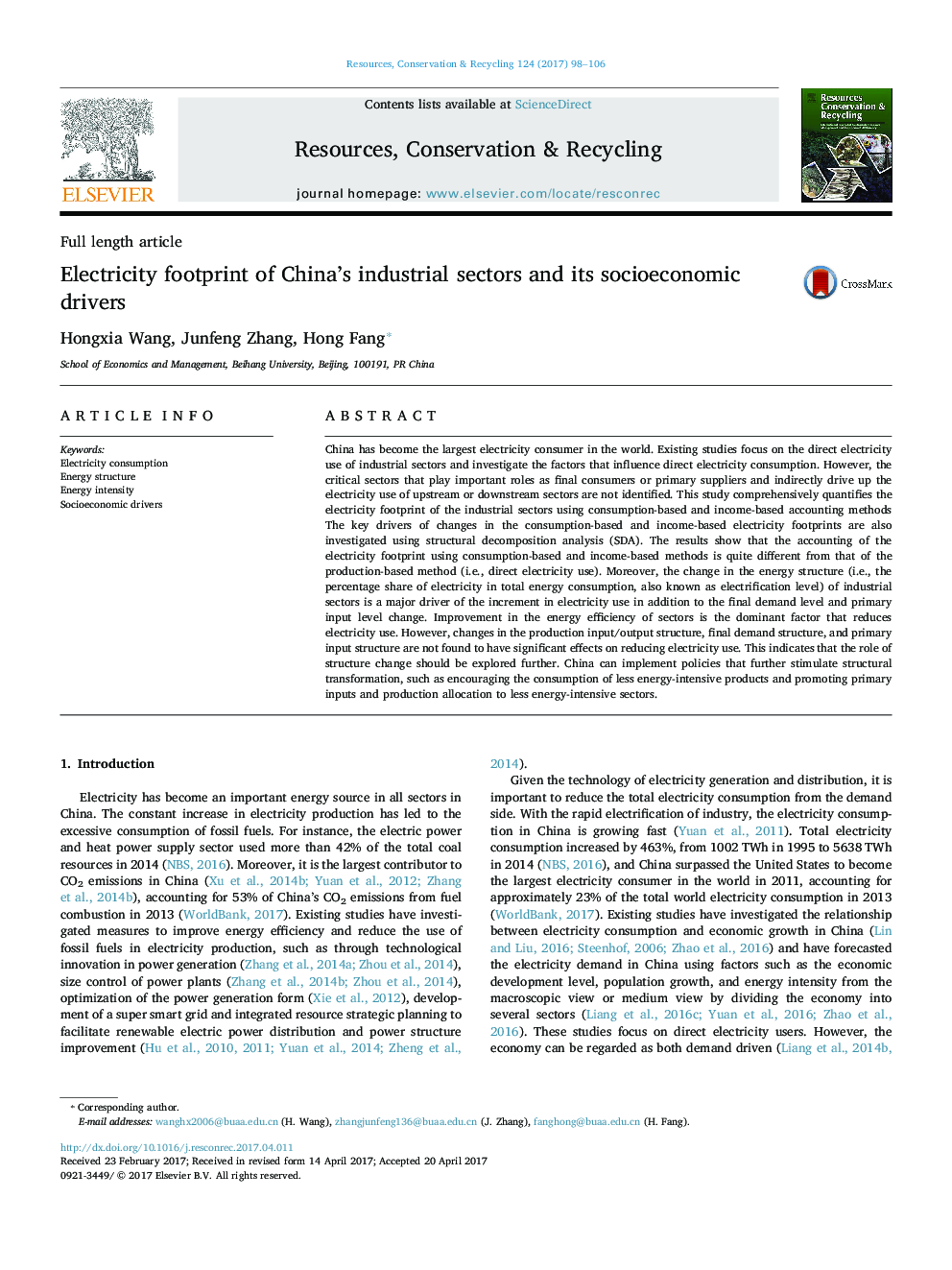| کد مقاله | کد نشریه | سال انتشار | مقاله انگلیسی | نسخه تمام متن |
|---|---|---|---|---|
| 5118729 | 1485668 | 2017 | 9 صفحه PDF | دانلود رایگان |
عنوان انگلیسی مقاله ISI
Electricity footprint of China's industrial sectors and its socioeconomic drivers
ترجمه فارسی عنوان
راندمان برق بخش های صنعت چین و رانندگان اقتصادی و اجتماعی آن
دانلود مقاله + سفارش ترجمه
دانلود مقاله ISI انگلیسی
رایگان برای ایرانیان
کلمات کلیدی
مصرف برق، ساختار انرژی، شدت انرژی، رانندگان اجتماعی
موضوعات مرتبط
مهندسی و علوم پایه
مهندسی انرژی
انرژی های تجدید پذیر، توسعه پایدار و محیط زیست
چکیده انگلیسی
China has become the largest electricity consumer in the world. Existing studies focus on the direct electricity use of industrial sectors and investigate the factors that influence direct electricity consumption. However, the critical sectors that play important roles as final consumers or primary suppliers and indirectly drive up the electricity use of upstream or downstream sectors are not identified. This study comprehensively quantifies the electricity footprint of the industrial sectors using consumption-based and income-based accounting methods The key drivers of changes in the consumption-based and income-based electricity footprints are also investigated using structural decomposition analysis (SDA). The results show that the accounting of the electricity footprint using consumption-based and income-based methods is quite different from that of the production-based method (i.e., direct electricity use). Moreover, the change in the energy structure (i.e., the percentage share of electricity in total energy consumption, also known as electrification level) of industrial sectors is a major driver of the increment in electricity use in addition to the final demand level and primary input level change. Improvement in the energy efficiency of sectors is the dominant factor that reduces electricity use. However, changes in the production input/output structure, final demand structure, and primary input structure are not found to have significant effects on reducing electricity use. This indicates that the role of structure change should be explored further. China can implement policies that further stimulate structural transformation, such as encouraging the consumption of less energy-intensive products and promoting primary inputs and production allocation to less energy-intensive sectors.
ناشر
Database: Elsevier - ScienceDirect (ساینس دایرکت)
Journal: Resources, Conservation and Recycling - Volume 124, September 2017, Pages 98-106
Journal: Resources, Conservation and Recycling - Volume 124, September 2017, Pages 98-106
نویسندگان
Hongxia Wang, Junfeng Zhang, Hong Fang,
